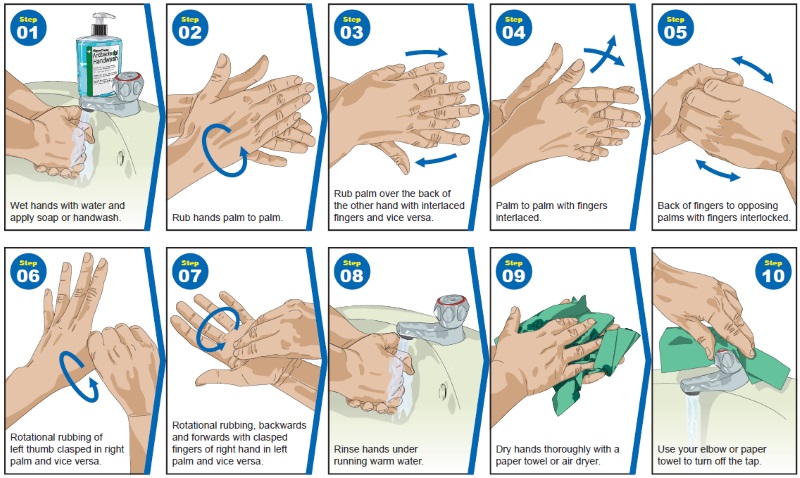Personal Protective Equipment (PPE)
The main risk from bodily fluids is infection following hand to mouth, nose or eye contact during clean up. There is also a risk of infection via broken skin. The cleaning agents used themselves may have harmful properties too, causing skin irritation, dermatitis or eye damage. For these reasons, it’s recommended that anyone cleaning up and disposing of blood and other bodily fluids uses the following PPE:- Eye protection
- Disposable coveralls with a hood
- A disposable plastic apron
- Wellingtons or waterproof disposable overshoes
- Waterproof and abrasion-resistant gloves (e.g. nitrile gloves. Should you also need to dispose of needles or other sharps, we recommend the use of special needle-resistant gloves)
Clean-up procedure and equipment
In order to dispose of blood and bodily fluids safely, you should have the following equipment (in addition to PPE):- Warning A-boards or cones
- Absorbent powder (commonly known as vomit powder)
- A dustpan and brush or scraper
- Marked biohazard waste bags or clinical waste sacks
- A disinfectant cleaning product
- A sponge, cloth or mop for wiping surfaces with disinfectant
After restricting access to the contaminated area and putting on the required PPE, your first step should be to sprinkle absorbent powder over the fluids. 10 grams of powder can absorb a litre of liquid. The powder rapidly turns into a gel which can then be scraped up. This powder contains a disinfectant agent, but the gel should still be treated as a contaminant for safety purposes. Solid faeces can be disposed of down a toilet without applying powder.
All of the used powder should be scraped up and placed inside a biohazard waste bag or sack. Any contaminated materials, such as bedding or clothing, should also be bagged separately for laundry or disposal. If soiled clothes are laundered, this should be done as a separate load.
Next, the affected surfaces and any affected work equipment need to be disinfected or sterilised and wiped clean using appropriate cleaning products.
Disposal
All used absorbent powders, contaminated disposable PPE and heavily soiled clothing, bedding or soft furnishings should be placed in biohazard or clinical waste bags. These should not be mixed with your regular waste. Instead, you should contact your local council or your waste disposal contractor and request a clinical waste collection. The majority of clinical waste is incinerated.Personal decontamination
Once you have finished clearing up and safely bagging any potentially infectious materials, and cleaning and disinfecting the affected surfaces, it’s time to remove and either dispose of or clean and disinfect your PPE. Removing PPE must be done carefully to ensure you don’t contaminate yourself.Assume everything is contaminated and follow these steps:
- Wash your hands with your gloves still on in hot soapy water if visibly contaminated, and dry with an absorbent material
- With your gloves still on, carefully remove your apron and coveralls, and any other PPE (except the gloves) taking care to avoid touching your skin or clothing whilst doing so or afterwards. Bag these for disposal or thorough cleaning, keeping disposables seperate from reusable equipment.
- Wash your hands with the gloves on with hot soapy water a second time, dry with an absorbent material and remove the gloves by peeling them off from the inside to out. Dispose of these with other hazardous waste.
By Sophie
Explore more:

